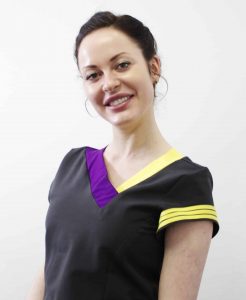It’s 2019 and more than ever, people want to look their best. The total number of surgical procedures worldwide is increasing, no doubt fuelled by dramatically cheaper procedures and our society increasingly influenced by social comparisons from the media.
According to the International Society of Aesthetic Plastic Surgery, Nosejobs are the fourth most popular cosmetic surgical treatment with around 8.7 million performed per year – that’s around twice as many as facelifts. That’s a lot of people who don’t like their nose, and those figures represent just the people who’ve done something about it!
People come to my practice – a non-surgical practice – obviously because they want to avoid having surgery. Their reasons are usually relating to cost, downtime and also that they don’t want a big change but a subtle one, a trend which is being referred to as “tweakments”.
Enter: the non-surgical rhinoplasty.
What is it and how does it work?
Non-surgical rhinoplasty is a way of reshaping the nose without surgery. Dermal filler is injected into the nose to straighten it. By adding filler either side of a bump or filling an indentation it’s possible to smooth the appearance in a more subtle way than having surgery.
The result is an illusion of straightness. It’s effectively camouflage, whereby the substantial structure of the nose is maintained.
This may not sound like much but my patients often tell me the results are life-changing. Sometimes even small changes in projection or smoothing out bumps will make the nose appear smaller and straighter. This is because the eye has a tendency to notice irregularities more in faces and also the light reflects off a bump more obviously.
Once the small irregularities are gone, the eye finds it easier to follow smooth lines and stops being able to measure size, which is why even though post-operatively the nose is technically bigger, it appears smaller.
It’s pretty neat!
How long does it take and how long does it last?
After a consultation to establish suitability, the treatment itself is relatively quick and done in around 15-30 minutes with no pain and no downtime. There’s no need for an inpatient stay and you can return to normal life immediately.
The results last around 9-12 months depending on the type of filler used. The most commonly used fillers are hyaluronic acid, which are very compatible with the body and can be reversed.
How much does it cost?
Whilst surgery can cost several thousand pounds, non-surgical rhinoplasty is usually an order of magnitude less expensive. At the hands of experienced dental and medical practitioners you can expect to pay in the region of £300-£700 for the procedure depending on the complexity of your case and the amount of filler required. So it’s easy to see why so many patients are opting for the non-surgical option.
Are there any risks?
As with any medical procedure there are risks. These are generally mild and transient, such as bruising and swelling. However, very delicate blood vessels supply the nose and there are rare instances of these getting blocked causing scarring. In the hands of a competent injector however, these risks can be managed and most resolve without any long term problems. Outcomes such as these are extremely rare and will be discussed with you at your consultation.
What type of nose can be treated?
Non-surgical rhinoplasty can hide bumps, straighten asymmetries, elevate the nasal tip in cases of drooping, feminise (or masculinise the nose) and soften features. Many different people seek treatment and it’s not only those who dislike the nose they were born with. I see many patients who’ve suffered trauma-induced changes to the nose and also those who are dissatisfied with surgical results and don’t want to undergo further invasive surgery.
Are there any noses that can’t be treated
Nose filler will increase the size of the nose, so if you’re not comfortable with this then you may benefit more from surgery. It is difficult to reduce the width of the nose in cases with broad tips or flared nostrils by using dermal filler, so in these cases surgery may also be the best solution.
Conclusion
I’ve seen a huge increase lately in nose filler consultations. I would go so far as to say that it is almost the same volume as people coming for lip fillers these days. I achieve fantastic results and with it being low risk and low cost, it’s a great way to make people feel better about their nose without resorting to surgery. If you have hated your nose forever, what are you waiting for?

By Dr MJ Rowland-Warmann
Dr MJ Rowland-Warmann is the founder and lead clinician at Smileworks, Liverpool’s most popular dental and aesthetic clinic. She is a dentist and holds an MSc in Aesthetic Medicine from Queen Mary University of London.
She has a special interest in dermal filler, toxin and thread lift treatment and the management of dermal filler complications, writing extensively on the subject.
Instagram: @dr_mj_smileworks